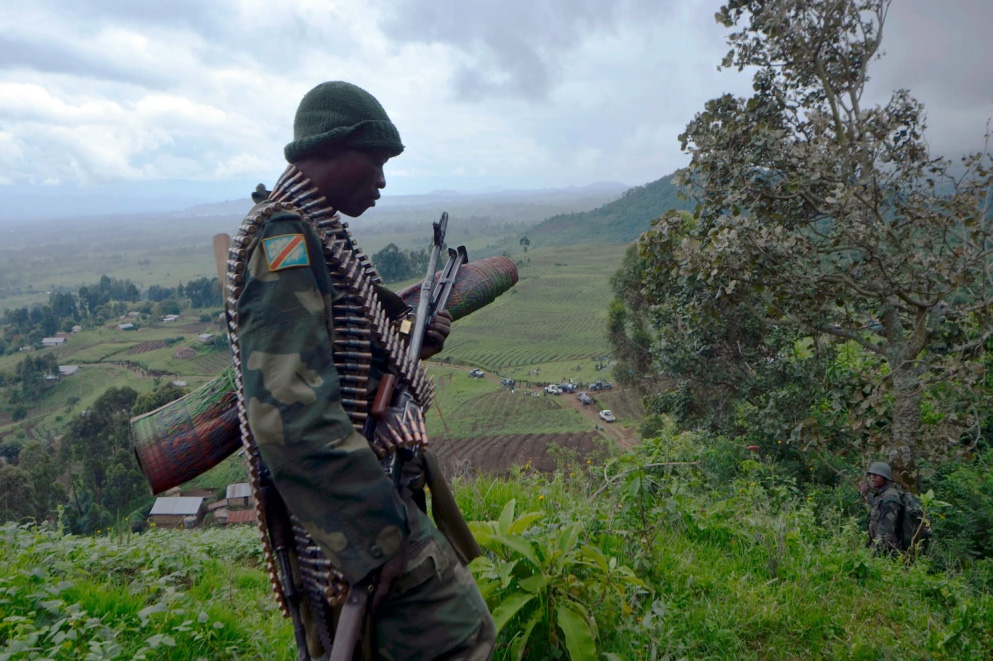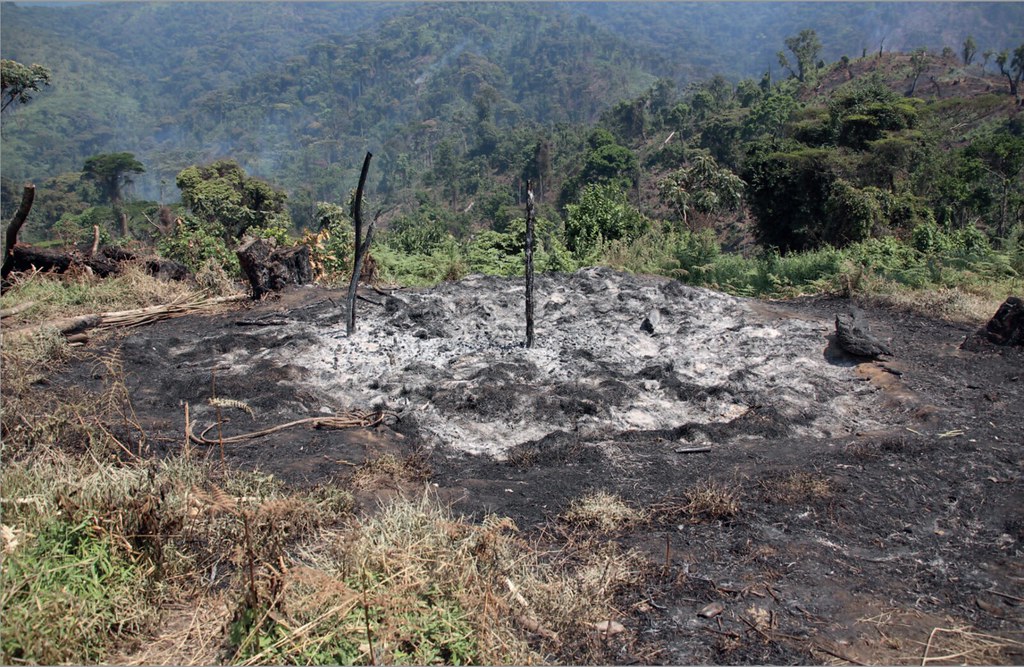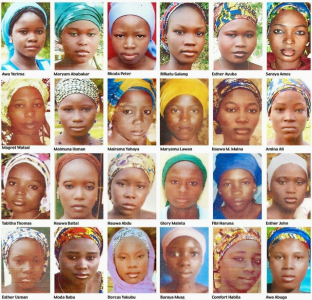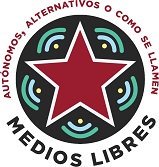
Africa
ONGs al servicio del saqueo de los territorios: el caso de la Fundación Earthworm
Fuente: Avispa Midia
por Movimiento Mundial por los Bosques Tropicales
Con el pretexto de la “mediación de conflictos” y del empoderamiento de comunidades, las acciones de ciertas ONGs corporativas hacen que las comunidades sigan sin tener acceso a sus tierras ni control sobre ellas, además de reforzar modelos de producción destructivos. Un ejemplo es la asociación de la Fundación Earthworm con el agronegocio de la palma aceitera en diversos países.
Desde hace décadas, las corporaciones del agronegocio, de la minería o del petróleo se asocian con ONGs y entidades sin ánimo de lucro para intentar limpiar su imagen ante la contaminación y destrucción que causan sus actividades. Para esas empresas, presentarse como “sostenibles” por medio de esas colaboraciones es una estrategia eficaz para satisfacer las demandas de los consumidores, obtener beneficios fiscales, conseguir financiación y cumplir las medidas compensatorias exigidas por los organismos reguladores.
Pero más allá de la clásica práctica de maquillaje verde (greenwashing), cada vez más las empresas extractivas y del agronegocio contratan a esas entidades para que asuman un papel central en la llamada “mediación de conflictos” con las comunidades rurales que forman parte de los territorios donde esos sectores operan o buscan operar. Una de estas entidades es la Fundación Earthworm, que suele aparecer en los relatos que comparten con WRM las comunidades que se enfrentan a conflictos con las empresas en sus territorios.
¿Qué es la Fundación Earthworm?
Fundada en 1999 como Tropical Forest Trust (TFT), Earthworm se convirtió en una fundación en 2019. Con sede en Suiza, cuenta con más de 300 empleados en más de 15 sucursales distribuidas por varios países.
Según la propia organización, su misión es “crear un mundo en el que las personas y la naturaleza prosperen en armonía”. Uno de sus vídeos promocionales dice que Earthworm “crea soluciones con las empresas para sanar la naturaleza y a las personas”. Este enunciado casi lírico está muy lejos de expresar lo que realmente hace la Fundación Earthworm y para quiénes trabaja. En la práctica, su labor consiste en ayudar a las corporaciones internacionales a garantizar que nada se interponga en el flujo de mercancías a lo largo de sus extensas cadenas de suministro, de modo que no encuentren obstáculos para ampliar su producción y extracción de materias primas e incorporarlas como mercancías a los mercados globalizados.
Las empresas y la Fundación Earthworm
En el informe anual de 2023 publicado por la Fundación Earthworm, grandes empresas figuran entre sus miembros, sobre todo del agronegocio, pero también de la minería, bienes de consumo y gigantes del comercio minorista. En años anteriores, la organización también recibió fondos de petroleras como Shell.
De 2019 a 2023, la Fundación Earthworm experimentó un crecimiento de sus ingresos en un 59%, totalizando casi 100 millones de dólares percibidos en ese periodo. Aproximadamente el 90% de esta suma procede de los más de 50 miembros y socios -principalmente empresas privadas-, frente a cerca del 4% procedente de ayudas de administraciones públicas. Este aumento de los ingresos también se refleja en los salarios de los ocho directivos de la organización, que percibieron 1,6 millones de dólares en 2023.
En uno de sus videos promocionales, la Fundación Earthworm afirma: “Si no trabajamos con las empresas, no cambiaremos el mundo”. Pero el hecho de que varias de estas empresas sean en realidad miembros de la Fundación plantea la siguiente pregunta: ¿dónde está la línea divisoria entre trabajar con ellas y trabajar para ellas?
¿Qué hace la Fundación Earthworm?
Earthworm interviene cuando el conflicto de una empresa con las comunidades amenaza con afectar de algún modo los negocios de la empresa. Entonces, se contrata a la fundación para que ‘resuelva el problema’ mediante la buena voluntad de todas las partes implicadas en un proceso de mediación. Sin embargo, lo que el WRM ha aprendido en décadas de apoyo a luchas de comunidades es que el acaparamiento de tierras, la violencia, los conflictos y la destrucción son partes inherentes, inseparables de los modelos de negocio de los clientes de Earthworm, e imposibles de resolver a través de mediación y buena voluntad.
Con ese objetivo, Earthworm se acerca a las comunidades afectadas, organiza cursos y otras actividades con ellos, con ONGs, gobiernos, académicos, etc. Sin embargo, ¿hasta qué punto es posible creer que una organización que se propone mediar en conflictos actuará con justicia cuando la gran mayoría de sus fondos viene de las empresas que causan esos conflictos? Aparte del dinero, otra pregunta: ¿puede haber una intervención honesta cuando la visión del mundo de quienes se presentan como mediadores está mucho más alineada con la de las empresas y no con las comunidades afectadas? Cuestiones como éstas han surgido en varios lugares donde Earthworm ha intervenido en nombre de empresas.
La actuación de Earthworm en la “mediación” de conflictos entre la industria de la palma aceitera y las comunidades rurales
Tomemos como ejemplo uno de los principales productos relacionados con el trabajo de Earthworm: el aceite de palma. El sistema de producción de aceite de palma adoptado por varias de las empresas que financian a esta fundación se basa en plantaciones a gran escala, uso intensivo de agrotóxicos, fertilizantes sintéticos, sobreexplotación de la mano de obra y usurpación de territorios comunitarios con tácticas corporativas muy conocidas. En África Occidental y Central, en particular, el proceso mismo por el que se otorgaron a las empresas de aceite de palma las concesiones de tierras está en el centro de la disputa con las comunidades. Empresas multinacionales como Socfin, Wilmar y Golden Veroleum siguen beneficiándose de leyes agrarias de la época colonial que ignoran los derechos de las comunidades sobre sus territorios tradicionales y que les permitieron acceder a gigantescas áreas que pertenecían a esas comunidades.

Como consecuencia, este modelo inevitablemente supone la pérdida de tierras, violencia y la desarticulación de las comunidades tradicionales. Las comunidades afectadas también se enfrentan a la contaminación del agua, una disminución de la disponibilidad de caza, alimentos e hierbas medicinales; en otras palabras, los territorios en los que viven se ven completamente transformados por la producción de commodities para exportación.
La incompatibilidad y el choque entre el modelo de producción corporativo y el modo de vida de las comunidades tradicionales ha provocado graves conflictos en numerosas regiones del Sur Global. En este contexto, las compañías de aceite de palma han contratado a la Fundación Earthworm para actuar en varios de esos conflictos, lo que ha multiplicado los problemas para las comunidades.
Earthworm y Socfin en Camerún y Liberia
Un ejemplo es el gigante del agronegocio Socfin, que tiene como accionistas mayoritarios a la familia belga Fabri y al multimillonario francés Vincent Bolloré. Socfin se unió a Earthworm en 2017, fecha que coincide con la publicación de su “política de gestión responsable”. En este documento, Socfin afirma que está comprometida con las comunidades rurales que viven en las regiones donde se encuentran sus plantaciones de palma aceitera y de caucho.
Camerún, Liberia, Costa de Marfil, Nigeria y Camboya son algunos de los países en los que Socfin está presente y en los que Earthworm realizó estudios sobre los conflictos con las comunidades generados por la presencia de esa empresa. Los siete informes publicados por Earthworm desde 2023 sobre estos conflictos responden a un patrón, del que destacamos tres aspectos. Dadas las características de estas publicaciones, la fundación se asemeja mucho más a un vocero del grupo Socfin que a un organismo serio encargado de investigar las denuncias contra la empresa.
En primer lugar, cabe mencionar que Earthworm reconoce –aunque sería imposible no hacerlo– que “Socfin sigue recibiendo quejas ambientales y sociales”, añadiendo que esas quejas proceden “de los medios de comunicación internacionales y de algunas ONG”. Nótese que al concluir la frase de esta manera justo al principio de uno de sus informes, Earthworm remite el problema a los medios y a las ONG, como si fueran ellos -y no las comunidades- los que presentan las denuncias. Además, en los informes de Earthworm, se ‘reconoce’ que Socfin comete infracciones, pero siempre se menciona que Socfin ha tenido “progresos realizados en la aplicación de sus compromisos de gestión responsable”.
En segundo lugar, de los múltiples daños denunciados por las comunidades -como apropiación irregular de tierras, violencia sexual, contaminación de cuerpos de agua, destrucción de sepulturas y lugares sagrados, amenazas e intimidación, entre muchos otros-, Earthworm solo reconoce una parte de ellos en sus informes. La otra parte de los impactos se clasifica invariablemente de forma explícita como “alegaciones infundadas”, “parcialmente fundadas” o “fundadas pero no responsabilidad de Socfin”.

Entre los ejemplos de violaciones ignoradas por Earthworm está el caso concreto de tres áreas (Edéa, Mbongo y Mbambou) en Camerún, en las que se determinó que Socfin debía devolver miles de hectáreas a las autoridades locales descentralizadas. Según Earthworm, se trata de una medida “en curso”, que comenzó hace siete años con estudios para definir los límites de las áreas plantadas. Ante la morosidad de ese proceso, las comunidades han empezado a recuperar algunas de las áreas que les corresponden, reivindicando su derecho ya establecido a las tierras. Sin embargo, evitando una descripción más imparcial, Earthworm se refiere a las legítimas recuperaciones de tierras por parte de las comunidades como “intrusiones por terceros” y dice que “terceros (comunidades, trabajadores, etc.) están invadiendo las tierras tituladas de Socapalm”.
Otro ejemplo nos llega desde Liberia. Tras 7 años de asociación, Socfin y Earthworm no consiguieron resolver los conflictos con las comunidades, lo que llevó a la empresa a vender una de sus plantaciones en el país en 2024. Pero, ¿por qué, si se estaban ‘haciendo progresos’?
La tercera característica de los informes de la Fundación es precisamente su tono positivo: todo está en un “proceso de mejora continua”. En uno de sus estudios más recientes sobre los conflictos con las comunidades locales (¡aunque no se menciona la palabra conflicto en ninguno de los informes sobre Socfin!), la Fundación Earthworm concluye: “A pesar de los desafíos encontrados al inicio de las operaciones de Socfin en Camboya, la organización ha dado pasos significativos para implementar progresivamente sus compromisos de sostenibilidad”.
Earthworm afirma que Socfin está haciendo progresos, mientras la empresa sigue actuando como siempre. De forma escandalosa, elude el hecho de que, tras casi una década de trabajar con Socfin, los problemas a los que se enfrentan y denuncian las comunidades persisten en las diferentes regiones y países en los que opera la empresa, especialmente las denuncias relacionadas al derecho a la tierra y las violaciones de los derechos tradicionales de las comunidades sobre sus tierras.
Earthworm y Agropalma en Brasil
Agroapalma es una de las mayores empresas de aceite de palma de Brasil. Pese a su afirmación de que la relación con las comunidades está “en el centro de su estrategia de sostenibilidad”, Agropalma acumula denuncias en su contra por acaparamiento de tierras y uso de la violencia para desalojar a comunidades tradicionales. Como consecuencia de esas acusaciones, la RSPO (Mesa Redonda sobre la Palma Aceitera Sostenible) suspendió su certificación en 2023.
Para cumplir los requisitos de uno de sus clientes, Agropalma pasó a contratar los servicios de la Fundación Earthworm en 2022. Earthworm abrió una sucursal en Quatro Bocas, en el municipio de Tomé-Açú, en el epicentro de la “guerra del aceite de palma”, donde también cuenta con el apoyo de Cargil y Belem Bioenergia Brasil (BBB), empresas que operan en ese mismo sector. Earthworm afirma que su trabajo en la región está “empoderando a las comunidades” y reduciendo los conflictos en las “cadenas de suministro.
La colaboración entre Agropalma y Earthworm ha servido para tranquilizar a los clientes de la empresa. Un informe de Sime Darby Guthrie International (proveedor de materias primas a Nestlé, Unilever, P&G), por ejemplo, menciona la participación de “una tercera parte para llevar a cabo una evaluación externa para investigar los supuestos problemas de derechos sobre la tierra”, señalando a Earthworm como un actor clave vinculado al plan de acción de Agropalma “para recuperar su certificación RSPO”. Sin embargo, la diferencia del optimismo de las corporaciones compradoras de aceite de palma a nivel internacional, los relatos que nos llegan desde Brasil señalan que la actuación de Earthworm en esa región está generando divisiones internas, contribuyendo a la desarticulación de las comunidades indígenas y quilombolas.
Voces desde los territorios
Para comprender mejor las implicaciones de la presencia de la Fundación Earthworm para las comunidades, el WRM facilitó un espacio de intercambio virtual con activistas de Camerún y Brasil. Sus grupos están involucrados en la lucha por la justicia social y los derechos de las comunidades afectadas no solo por el colonialismo de la palma aceitera, sino también por la intervención de esta fundación contratada por las empresas.
De Camerún, participó SYNAPARCAM, una organización que defiende los derechos de las comunidades afectadas por las plantaciones de Socfin. Desde Brasil, participó Elielson Pereira da Silva, quien nació y creció en el estado de Pará, y actualmente investiga los conflictos territoriales y étnicos en su estado, tratando de visibilizar la situación y la lucha de las comunidades. Los participantes del intercambio virtual nos contaron sobre el trabajo de la Fundación Earthworm en sus territorios. Lee a continuación un resumen de la conversación.
WRM: ¿Cómo la Fundación Earthworm se puso en contacto con su organización y cómo describiría su trabajo?
ELIELSON (Pará, Brasil): Earthworm llegó al valle de Acará en 2023, contratada por Cargill, empresa compradora de aceite de Agropalma, en medio de encendidos conflictos con los pueblos tradicionales. Cargill, ante las repercusiones de los conflictos, intentaba “limpiar la cadena de suministro”. Así que Earthworm empezó a buscar a líderes indígenas y quilombolas para intentar mediar el conflicto para intentar llegar a un acuerdo entre los representantes de esas comunidades y la empresa de aceite de palma.
En 2023, en colaboración con Agropalma, Earthworm provocó una división interna entre las poblaciones indígenas, que resultó extremadamente perjudicial, llevando a la creación de otra asociación indígena, que se sentó a la mesa con la empresa. Agropalma prometió entonces que no habría más conflictos y que les cedería un área donde podrían cosechar la palma aceitera para la comercialización.
En los últimos 40 años, Agropalma ha creado muchas barreras para las comunidades: no se puede acceder fácilmente ni a los ríos, ni al cementerio, ni al área de frutales, ni a los huertos. La circulación está condicionada a las prohibiciones impuestas por la empresa. Pero en la mesa de negociaciones, Agropalma prometió que todo sería diferente, desde que la nueva asociación cooptada garantizara que las acciones de la otra asociación (y sus reivindicaciones por el reconocimiento de sus derechos territoriales) se detendría. Así se creó esa división interna.
Como las promesas iniciales no se cumplieron y los representantes de la ONG [Earthworm] desaparecieron, al igual que los directivos de la empresa, los indígenas iniciaron una acción para recuperar su territorio, con el fin de llamar la atención y alertar a los medios de comunicación. Durante este proceso, en 2023, un indígena Turiwara fue asesinado a balazos por guardias de seguridad contratados por la empresa.
Hoy tenemos un faccionalismo, con dos organizaciones indígenas, una división interna estimulada por esta ONG [Earthworm], amparada por la empresa Agropalma, que ha creado muchos problemas y dificultado muchísimo el proceso de organización social y política de los indígenas.
Sospechamos que Earthworm está involucrada en la elaboración de un nuevo acuerdo para que las comunidades indígenas renuncien a sus reivindicaciones territoriales, ante el proceso de venta de Agropalma S.A., en marcha desde mediados de 2022. La empresa interesada en adquirir los activos de Agropalma S.A. es Belém Bioenergia Brasil (BBB), una joint venture formada por Galp Energia (Portugal) y Palma Tauá Brasil (asociación entre Banco Opportunitty Agro y Dentauá S.A.).
SYNAPARCAM (Camerún): En Camerún, Earthworm (antes TFT) tiene un Centro de Formación en la capital. En 2011 algunos de nosotros fuimos allá a dar un curso sobre defensa comunitaria de la tierra. La comunidad llevaba décadas sufriendo la ocupación de nuestras tierras ancestrales por parte de Socapalm. Earthworm nos invitó a exponer los problemas que teníamos con la empresa. Estábamos empezando a formar nuestra organización Synaparcam.
Cuando cambiaron de nombre [de TFT a Earthworm], nos dijeron: “ahora somos una nueva organización y podemos ayudarles a resolver el problema con Socapalm”, del grupo Socfin, y empezaron a presentarse como mediadores. Pero después de dos o tres reuniones, en las que, además de la empresa, había representantes de la administración pública, líderes tradicionales de las comunidades y élites locales, en Synaparcam hemos optado por retirarnos porque nos dimos cuenta de que solo se trataba de crear una imagen externa de que estábamos colaborando con Earthworm para solucionar el conflicto.
Entre 2012 y 2020, Earthworm intentó en varias ocasiones situarse como mediadora, pero en la comunidad nos dimos cuenta de que no tenía sentido para nosotros reunirnos con la empresa con Earthworm como intermediario. En septiembre de 2020, Earthworm organizó una de esas reuniones con la empresa y la Synaparcam, afirmando que resultaría útil porque conseguiría que los directivos de la empresa escucharan a las comunidades. Después de la reunión nos dimos cuenta de que la secretaría de Earthworm había elaborado un buen informe, pero que las resoluciones presentadas superaban la capacidad de Earthworm para conseguir que Socapalm las aceptara. A partir de esta observación, comprendimos que Earthworm no estaba jugando limpio.
Bueno, esa fue nuestra primera experiencia con Earthworm y así fue como al principio tuvimos cierta confianza en que se comprometerían con lo que nos habían presentado.
WRM: Earthworm está financiada sobre todo por las empresas que la contratan para “mediar” los conflictos, entre otros. Cuando Earthworm se presentó a su organización/comunidad, ¿les explicaron su relación con las empresas y quién financia su trabajo? ¿Cómo cree que la fuente de financiación de Earthworm ha influido en estos procesos de mediación de conflictos?
ELIELSON: Por lo que cuentan las comunidades, su forma de presentarse es como si se tratara de una organización independiente; no exponen esos vínculos, aunque dicen que sí monitorean las cadenas de suministro de las empresas. Las palabras “organización independiente” se mencionan con frecuencia en esos diálogos. Lo que hemos visto son experiencias de mediación muy dañinas, de “armonía coercitiva”, de fomentar la división interna para debilitar la lucha de los pueblos y su proceso identitario.
SYNAPARCAM: El representante de Earthworm en África es camerunés, y sí, nos informó de que Earthworm recibe honorarios de Socfin. Y nos dijo que si Socfin no cambiaba su política, Earthworm abandonaría el proceso de mediación y el trabajo de Earthworm con la empresa terminará. Nos dijo: “No dejaremos que las empresas de los colonizadores hagan lo mismo que antes” [en referencia al hecho de que Socfin está controlada por el multimillonario francés Vincent Bolloré].
Pero nos dimos cuenta de que a lo largo del proceso Earthworm priorizó los honorarios en detrimento de las comunidades. Así que somos conscientes [de dónde proceden los fondos], siguen la misma línea que grandes ONG como WWF.
WRM: Synaparcam se negó a realizar “visitas de campo” conjuntas con Earthworm en 2023. Podría explicarnos un poco más los motivos de esta decisión y por qué Synaparcam decidió elaborar su propio informe?
SYNAPARCAM: En 2023 desde Synaparcam ya sabíamos que Socapalm no estaba cumpliendo los compromisos que había asumido anteriormente. Antes de 2023 ya no estábamos colaborando con Earthworm. Así que buscamos nuestra propia financiación para elaborar un buen informe, incluso con gente muy capacitada y de fuera, paralelamente al informe de Earthworm.
El estudio de Synaparcam confirmó siete puntos conflictivos, pero Earthworm identificó un número mucho menor. Por ejemplo, el informe de Earthworm afirma que la empresa construyó varias escuelas y que casi no hubo contaminación de los ríos. El informe de Earthworm se publicó antes del informe de Synaparcam. La Earthworm nunca comentó sobre varios puntos solo identificados en el informe de Synaparcam. Si uno lee esos informes, cree que relatan dos mundos diferentes.
Pasó lo mismo con la RSPO. Uno de los motivos para contratar a Earthworm fue que Socapalm quería obtener el sello de certificación.
WRM: Sobre el tema de la RSPO, trasladando la cuestión al caso de Brasil, sabemos que se suspendió la certificación de Agropalma en 2023 por acusaciones de acaparamiento de tierras y violencia. Elielson, ¿cree que la contratación de Earthworm representa una garantía de que Agropalma respeta los derechos de las comunidades?
ELIELSON: De ninguna manera representa algún tipo de garantía. La empresa está en conflicto abierto con las comunidades. Toda esa enorme inversión en publicidad, en comunicación, toda esta palabrería de “responsabilidad social corporativa” solo hacen de Agropalma un gran caso de greenwashing. Ese “arsenal discursivo” de palma aceitera sostenible, relaciones armoniosas, etc., es muy diferente de la realidad, pues desde 2022 hay un recrudecimiento de los conflictos, con el bloqueo del acceso a las zonas de uso común, a los cementerios ancestrales, a la navegación por el río y, sorprendentemente, con grandes trincheras y barricadas.
Hay grandes zanjas, a veces de 5 metros de profundidad y 2 de ancho, que parecen literalmente un campo de guerra, con un gran riesgo y casos ya registrados de accidentes. Hay comunidades que están rodeadas, por ejemplo, de alambre de púas, como si se tratara de la frontera entre México y Estados Unidos, o Palestina e Israel.
WRM: ¿Y qué dice Earthworm al respecto?
ELIELSON: En ningún momento hemos visto alguna manifestación o declaración pública de Earthworm sobre estas prácticas de terrorismo corporativo, barricadas, trincheras, cercas -y las comunidades incluso temen que se electrifiquen esas cercas. No tenemos conocimiento de ningún tipo de reprobación por parte de Earthworm a esas prácticas por parte de Agropalma.
WRM: Si tomamos, por ejemplo, las localidades camerunesas Dibombari y Mbonjo, en la práctica, desde que empezó a actuar Earthworm, ¿ha cambiado algo para las comunidades con respecto a los problemas causados por Socapalm?
SYNAPARCAM: Las principales reivindicaciones de las comunidades se refieren a la tierra, los lugares sagrados, la contaminación del agua y la violencia contra las mujeres. Así pues, esta es una pregunta muy importante, gracias. Las violaciones sexuales contra las mujeres, el incumplimiento de la retrocesión de tierras y el desprecio por los lugares sagrados son para nosotros los tres problemas más graves.
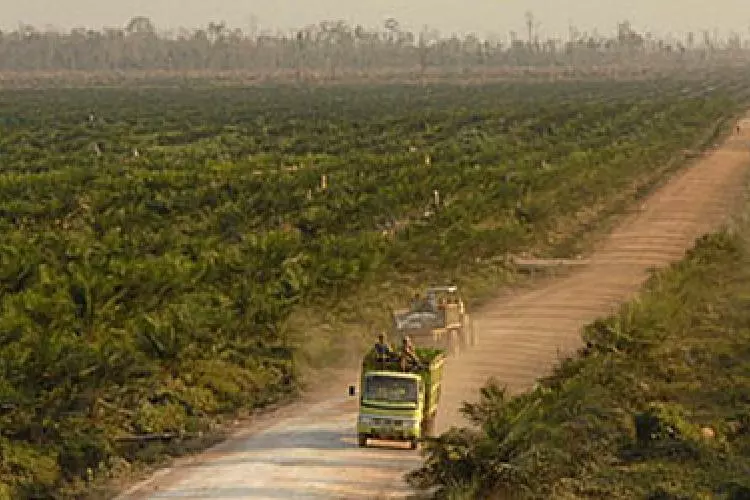
Cuando se privatizó Socapalm y sus plantaciones de palma aceitera [hace más de 24 años], Socfin adquirió Socapalm. Después de firmar el contrato de arrendamiento en 2000, la empresa evaluó las tierras arrendadas y pidió al Estado que firmara una enmienda, reduciendo el área de 78.000 hectáreas a 58.000 hectáreas. Esta reducción del área está claramente establecida en la enmienda. Pero no ocurrió nada. Así que una de las acciones de Synaparcam fue plantar alimentos en una de estas áreas en disputa, porque nos dimos cuenta de que las autoridades no cumplen su función de supervisión y la empresa no respeta los contratos firmados con el Estado. Tenemos la idea de mantener estos huertos, pero la realidad a la que nos enfrentamos es de presión, intimidación y detenciones de líderes.
Otra complicación es la RSPO, que ha clasificado algunas de las tierras a las que antes tenía acceso la comunidad como “zonas de alto valor de biodiversidad”, por lo que la comunidad ya no puede acceder a ellas – mientras Socapalm trazaba los perímetros para ampliar estas manzanas y recuperaba estas franjas de tierra de las comunidades – hay señales instalados y guardias de la empresa. La RSPO no reconoce todas las áreas reclamadas por las comunidades.
En cuanto a la presencia de Earthworm, la situación es de ningún avance; nos encontramos en el mismo punto en el que estábamos al principio.
WRM: Para ustedes, ¿estas consecuencias tienen que ver con algunos errores de la Fundación Earthworm o con la propia naturaleza de esta organización?
ELIELSON: Hay una cuestión estructural relacionada con esta pregunta. ¿Qué propósito tiene esta empresa [se refiere a Earthworm]? ¿Para qué se creó? Cuando vemos que tiene sucursales en todas partes del mundo (Indonesia, África, América Latina) donde están justo las empresas de palma aceitera, está claro que constituye un eslabón de esta cadena y forma parte de este juego de poder. Así que creo que en su actuación siempre se inclinará a favor de las empresas.
SYNAPARCAM: Observamos muchas cosas similares. En cuanto a la división de las comunidades, en nuestro caso, parece que Earthworm da consejos sobre cómo generar división en las comunidades, y luego la empresa envía un equipo a la localidad. Así que se trata de un método muy peligroso también, porque por un lado se acerca [a la comunidad] y por otro aconseja a la empresa sobre cómo dividir la comunidad.
WRM: ¿Qué mensaje le parece importante transmitir a una comunidad a la que podría dirigirse una organización como Earthworm, del mismo modo que antes se dirigieron a las comunidades de su entorno?
SYNAPARCAM: Nunca acepten una oferta así porque no habrá ningún cambio. Y es importante no tener un interlocutor. Si la empresa está interesada en cambiar, sabe dónde encontrar a la comunidad, así que recomendamos no aceptar [una propuesta de mediación como el de Earthworm] porque la mediación no llevará a ningún avance.
ELIELSON: Lo primero que les diría es: “¡Tengan mucho cuidado!”. También hay que evitar que entidades como Earthworm mantengan conversaciones a solas con líderes. El antiguo dicho “divide y vencerás” sigue aplicándose. Las empresas se especializan en fabricar dispositivos para debilitar las luchas de las comunidades.
Es importante entender [a esas organizaciones] como parte de un engranaje. También es importante conocer los antecedentes con otras comunidades; conocer la experiencia de otras comunidades que ya fueron objeto de situaciones similares. Y tener cuidado para no participar de manera aislada en sus intentos de cooptación, de persuasión, para no tomar decisiones precipitadas antes de evaluar las propuestas conjuntamente entre miembros de la comunidad.
Secretariado Internacional de WRM, Synaparcam y Elielson Pereira da Silva, Profesor de la Universidad Federal Rural de Amazonía e investigador del Proyecto Nueva Cartografía Social de Amazonía.
(Español) Con financiamiento del Banco Mundial, proyecto de conservación en África desplazará a miles de personas
Fuente: Avispa Midia
Por Sare Frabes
En el sur de Tanzania, con el argumento de la conservación de la naturaleza y el financiamiento del Banco Mundial, más de 20 mil personas del pueblo Maasai se enfrentan a la amenaza de desplazamiento forzado debido a la expansión del Parque Nacional Ruaha (RUNAPA, por sus siglas en inglés).
Fue en octubre 2022 cuando Angeline Mabula, del Ministerio de Tierras, Vivienda y Desarrollo de Asentamientos Humanos del país africano, anunció que las aldeas de Luhanga, Madundasi, Msanga, Iyala y Kalambo, sumando una población de 21,252 personas, junto con 47 subaldeas dentro de la región de Mbeya, serían dadas de baja y sus residentes desalojados para la expansión del RUNAPA.
Los intentos de desalojo en dicha área se dispararon como consecuencia del programa Gestión Resiliente de Recursos Naturales para el Turismo y Crecimiento (REGROW, por sus siglas en inglés) del Banco Mundial, un proyecto de 150 millones de dólares que tiene como objetivo la financiación de infraestructura y gestión para el desarrollo de cuatro parques nacionales en el país africano.
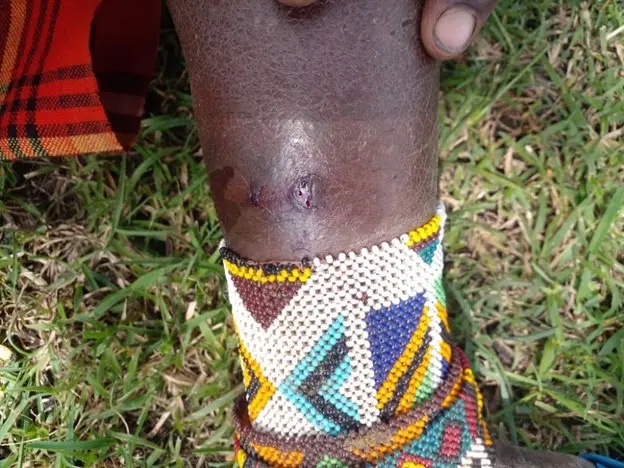
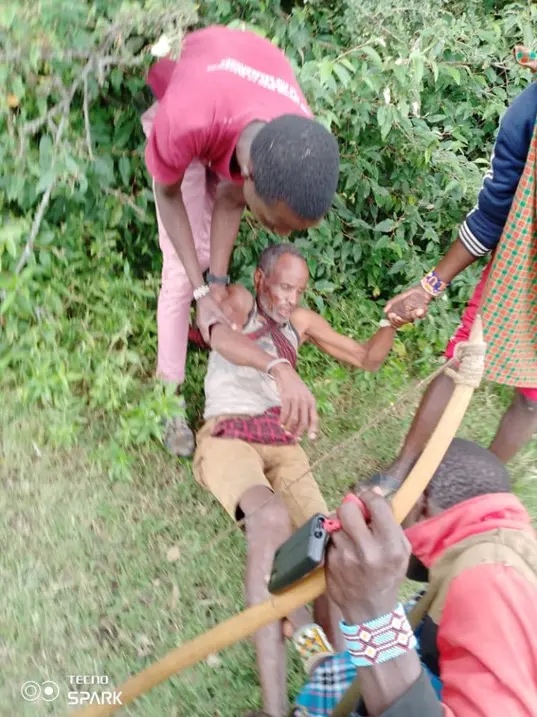
El informe Irresponsable y cómplice: El Banco Mundial financia los desalojos y los abusos de los derechos humanos en Tanzania, elaborado por el Instituto Oakland, acusa al ente financiero por “consentir” los desalojos, violaciones y asesinatos que se han registrado para la expansión del RUNAPA, el cual el gobierno pretende ampliar de uno a más dos millones de hectáreas.
“La violencia perpetrada por los guardabosques de la vida silvestre y las incautaciones desenfrenadas de ganado se están llevando a cabo para obligar a la gente a salir de sus tierras”, denuncia el Instituto quien también señala casos de violencia sexual y otras prácticas de crueldad por parte de los guardabosques financiados por REGROW.
Te puede interesar – WWF es acusada de financiar y armar grupos paramilitares que torturan y asesinan personas
Entre los testimonios recopilados para el informe, destacan la actuación de los guardabosques armados, quienes han sido involucrados en asesinatos. “Los tratan con crueldad, incluso los matan sin razón. No hay estado de derecho. RUNAPA está arrebatando tierras a agricultores y pastores y nos vemos obligados a abandonar nuestras tierras ancestrales”, comparte un poblador Maasai.
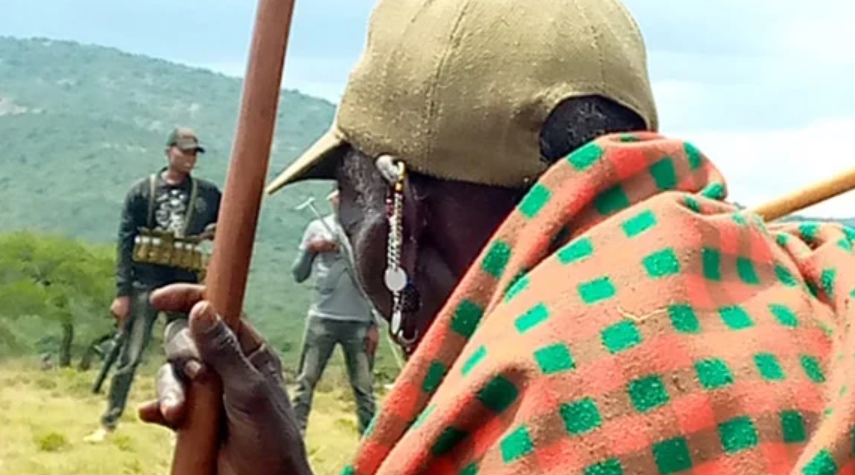
Según una alerta de la organización Salva la Selva, “estas estrategias de violencia y desplazamiento no son nuevas para los pueblos indígenas de Tanzania: más de 100,000 Maasai luchan por sus tierras y medios de subsistencia en el cráter del Ngorongoro y en el Serengeti”.
La alarma ante el desplazamiento de 80,000 habitantes de Ngorongoro, al norte del país africano, se disparó cuando en enero de este 2024 el gobierno de Tanzania anunció el cambio del estatus legal del Área de Conservación del Ngorongoro para no permitir ningún asentamiento humano. Tras el posicionamiento, las autoridades fijaron el objetivo de evacuar a 20,000 personas antes de marzo del presente año.
Estos desplazamientos se suman al caso del parque Ruahua, donde el gobierno de Tanzania afirma que, desde 2008, los límites del RUNAPA abarcan los territorios de las aldeas que busca desalojar en la actualidad. Sin embargo, los pobladores locales aseguran que dicha demarcación se limitó a un anuncio del gobierno que nunca fue implementado y, las aldeas que se ubican en dicho lugar que han permanecido durante generaciones, nunca otorgaron su consentimiento para la expansión del área protegida. Por ello, 852 pobladores mantienen una lucha legal ante el Tribunal Superior de Tanzania para detener los desalojos.
Acorde al informe del Instituto Oakland, las amenazas de desplazamiento repercuten negativamente en la cotidianidad de las poblaciones africanas. Esto debido a que grandes extensiones de arrozales no se han cultivado ante el temor de que los desalojos masivos sucedan en cualquier momento.
“En varias comunidades ya se han señalado casas para su demolición. Las obras de construcción de una escuela secundaria en la villa de Luhanga se han paralizado. En el pueblo de Iyala, el número de alumnos que pasan de la escuela primaria a la secundaria ha disminuido drásticamente. Los padres han dejado de enviar a sus hijos a la escuela debido a la amenaza de desalojo”, detalla el documento.
Turismo y conservación a costa de las personas
A pesar de que el informe del Instituto Oakland revela las violaciones del gobierno de Tanzania, producto del financiamiento del Banco Mundial, éste informó que su “mandato no se extiende a supervisar el comportamiento de organismos de los gobiernos de los países miembros” y se excusó de la violencia debido a que “en la medida en que el gobierno lleve a cabo desalojos con el fin de ampliar los límites del parque, tales actividades quedarían fuera del ámbito del proyecto”.
Ante las declaraciones del banco, Anuradha Mittal, directora del Instituto Oakland, acusó que el proyecto REGROW, que argumenta enfocarse en proteger la biodiversidad y la conservación de la naturaleza, por el contrario, financia un modelo represivo y violento de crecimiento económico con base en el aumento de los ingresos por turismo.
Cabe resaltar que el sector turístico en Tanzania representa uno de los mayores generadores de divisas, por lo que el gobierno del país africano se basó en estudios del Banco Mundial que busca aumentar la llegada de uno a ocho millones de turistas para 2025, principalmente de aquellos provenientes de China, India y Rusia.
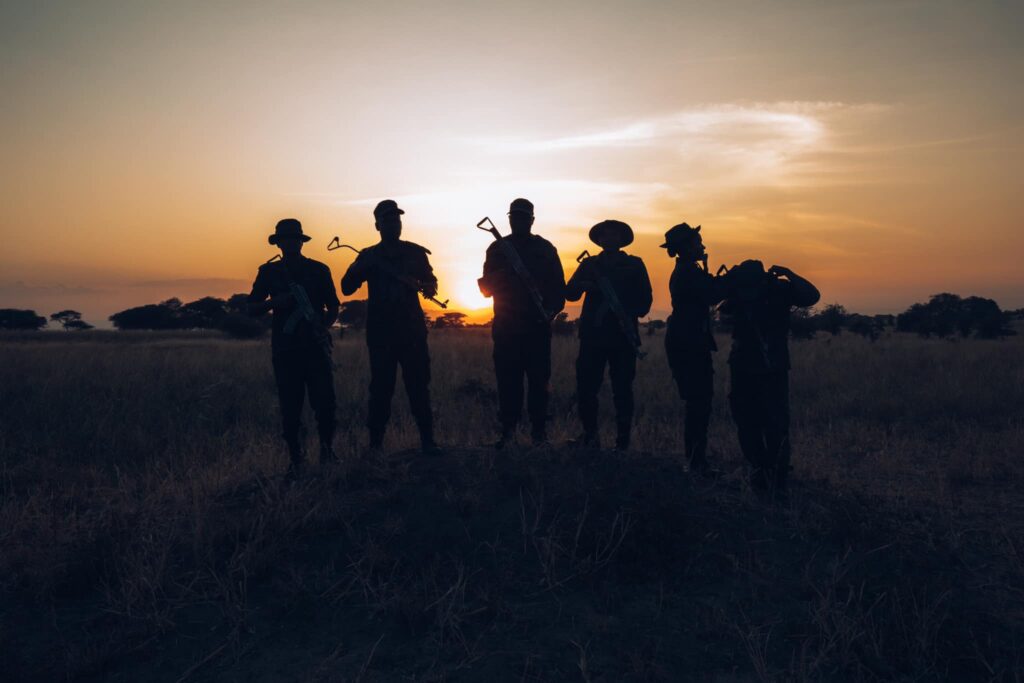
“En vista de la condena internacional de los desalojos forzosos de los Maasai en Ngorongoro y Loliondo, resulta asombroso que el banco sea cómplice de graves violaciones de los derechos humanos al apoyar la ampliación de otro parque nacional para el turismo”, condenó Mittal.
El programa REGROW se ejecuta desde el año 2017 y está previsto para implementarse hasta 2025. El proyecto abarca cuatro zonas protegidas: Parque Nacional de Mikumi, Parque Nacional Nyerere, Parque Nacional de las Montañas Udzungwa y Parque Nacional Ruaha, todos ubicados en lo que el Banco Mundial considera zonas turísticas prioritarias en el sur de Tanzania.
De un presupuesto total de 150 millones de dólares, 106 se destinarán a la ampliación de infraestructuras en áreas protegidas para con ello construir carreteras para mejorar el acceso a lugares turísticos, pistas de aterrizaje y centros de visitantes. También se encamina a la consolidación de puestos de seguridad y para el equipamiento de los guardaparques para evitar el uso “ilegal” de los recursos con actividades como la agricultura y el pastoreo.
Para octubre de 2023, el Banco Mundial había desembolsado ya 92 millones de dólares del programa, de los cuales 28 millones se entregaron tras efectuarse la queja oficial de los miembros de la comunidad Maasai en junio de 2023.
Para organizaciones como Salva la Selva, la situación en Tanzania es una muestra del peligro que representa la implementación de modelos de conservación como los que promueve la Cumbre de la ONU sobre Biodiversidad COP 15. Esto debido a que en 2022, casi 200 países acordaron colocar bajo protección el 30% de sus tierras y aguas para el año 2030.
“Si esta propuesta se implementa de mala manera, hasta 300 millones de personas podrían llegar a perder sus tierras y sus medios de subsistencia. Sin embargo, la expansión indiscriminada de las zonas protegidas no detendrá la destrucción del medio ambiente y la extinción masiva de especies”, sostiene la organización ambientalista.

